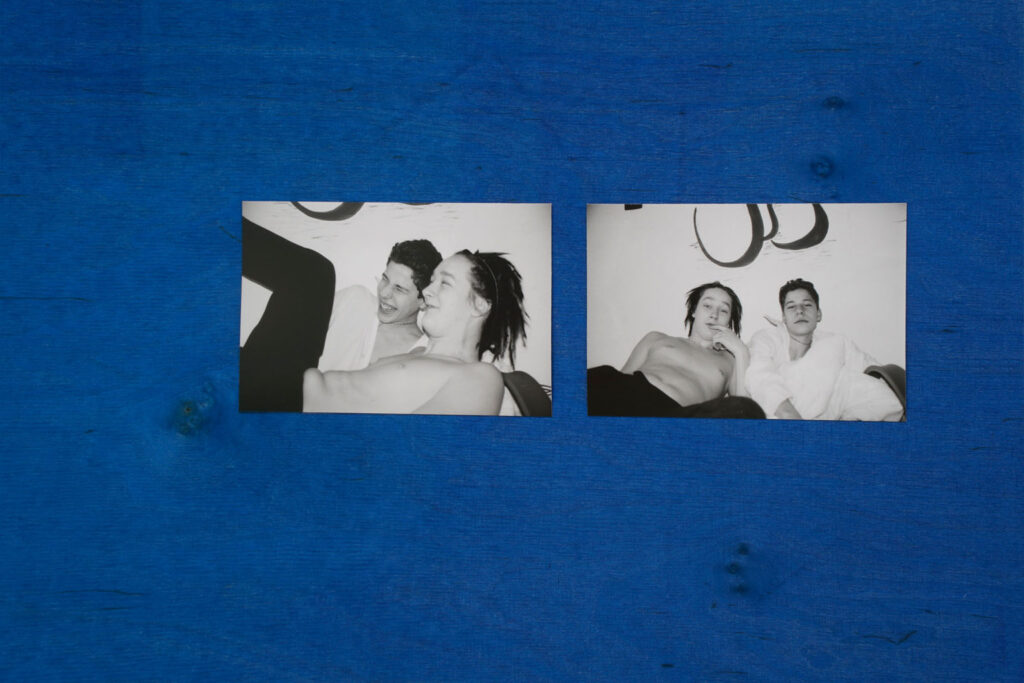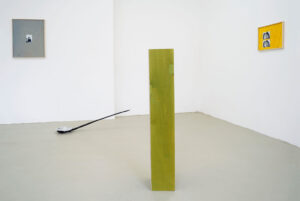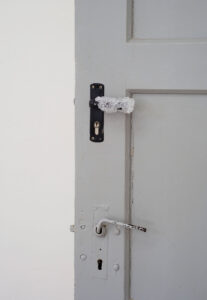FAK.22 // Mika Schwarz
Mika Schwarz MAGNA MAGMA 19/03/22 — 17/04/22 Eröffnung: 18/03/2022, 19 Uhr

Mika Schwarz, geboren 1986 in Österreich, lebt und arbeitet in Berlin. Sie erhielt ihr Diplom an der Hochschule für Grafik und Buchkunst Leipzig im Jahr 2016 bei Prof. Peter Piller und ihren Meisterschüler*Innen-Abschluss im Jahr 2019 bei Prof. Heidi Specker.
Für ihre aus Fotografien, Installationen und Objekten bestehende künstlerische Praxis, entwickelte sie, begleitet von intensiver Recherche zu Archäologie, Medientheorie und historischen Positionen in der Forschung, eine Arbeits- und Sprachwelt der Gegenwartsarchäologie. Sie erforscht und bearbeitet visuelle Phänomene, die sich unter anderem auf Alltags- und Gebrauchsgegenständen zeigen, auf multidisziplinäre Weise.
Ihre Arbeiten waren u. a. in der Galerie für Zeitgenössische Kunst – GfZK Leipzig 2019, am Goethe Institut Paris 2020 / Tel Aviv 2014, bei der Art Future Biennale in Riga, in der Galerie KUB Leipzig, sowie der Galerie Sprechsaal und dem Ausstellungsraum KuLe in Berlin zu sehen. Seit 2021 führt sie Lehraufträge für bildende Kunst an der TU Berlin aus.
Mika Schwarz, exhibition view
Mika Schwarz received her diploma at the Academy of Fine Arts Leipzig in 2016 with Prof. Peter Piller and her Meisterschülerinnen degree in 2019 with Prof. Heidi Specker. She completed one semester of visual arts each at the Accademia di Belle Arti Napoli and the Academy of Fine Arts Vienna.
In her artistic practice, she combines photographs, text, objects and videos to form autonomous systems and fictitious surveying techniques within her spacial installations. She examines artifacts of everyday life and its associated objects and commodities for their social relationships, accompanied by research into sub-areas of archeology and media theory. Schwarz is aiming to explore and enhance forms of dialogue between individuals als well as forms of orienting within, coping with and transforming preexisting systems.
In 2020 she received a stipend for visual artists by Kunstfonds Bonn (Neustart) and in 2021 stipends by VG Bild-Kunst (Neustart) and Berliner Senat. She is currently a lecturer for visual arts at TU Berlin. Shows include Galerie für Zeitgenössische Kunst – GfZK Leipzig, Goethe Institut Paris and the Art Future Biennale Riga.
Mika Schwarz, Sarabande, Aluminum potassium sulfate (doorhandle), variable size, 2022
FAK'22
Öffnungszeiten Fr — So 16 — 19 Uhr
(Eintritt frei)
Kuratiert von Kristina Jurotschkin und Florian Glaubitz


